Wondering if you can live in a garden room as a permanent residence? Before you start planning your backyard dwelling, you need to understand the legal requirements and limitations that apply to garden living spaces in the UK.
What Legally Defines a Garden Room as a Living Space?
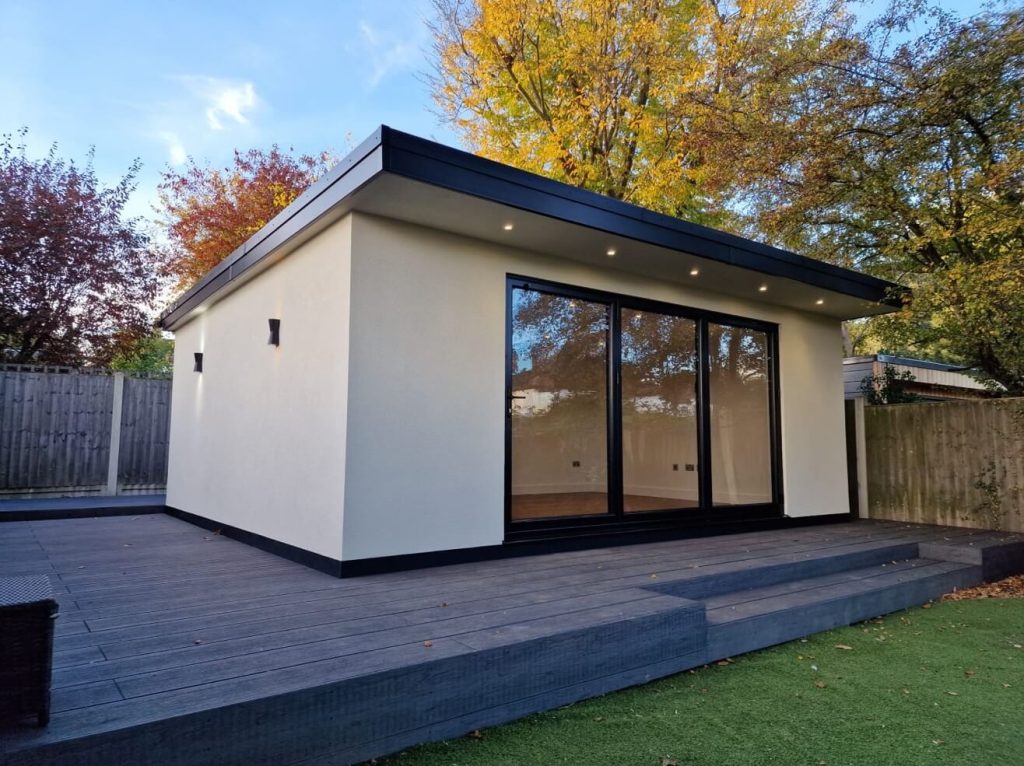
Source : garden rooms 365
The distinction between a standard garden room and a residential dwelling is crucial for anyone considering backyard living. In the UK, a garden room becomes classified as a living space when it’s used for regular overnight stays or as a self-contained living unit. This classification matters because different rules apply to residential structures compared to non-residential garden buildings.
Your garden room shifts into the ‘dwelling’ category when it contains facilities for day-to-day living. This includes sleeping accommodation alongside kitchen facilities, bathroom amenities, and living space. The presence of these features triggers the need for planning permission and compliance with building regulations.
The regulatory threshold that transforms your garden room into a living space isn’t just about physical features but also about usage patterns. Even if you occasionally have guests stay overnight, this doesn’t necessarily reclassify your garden room. However, if someone sleeps there regularly (such as every night), local authorities will consider this residential use regardless of what you call the structure.
Key Legal Terms Related to Garden Room Residences
- Ancillary use – When the garden room serves as an extension of the main house rather than an independent dwelling
- Primary residence – A dwelling where someone lives permanently
- Permitted development rights – Allowances to make certain changes without applying for planning permission
- Certificate of Lawfulness – Documentation confirming your garden room use is legal
- Use Class C3 – The planning classification for dwellinghouses
- Outbuilding – A detached structure within the curtilage of a house
When Do You Need Planning Permission to Live in a Garden Room?
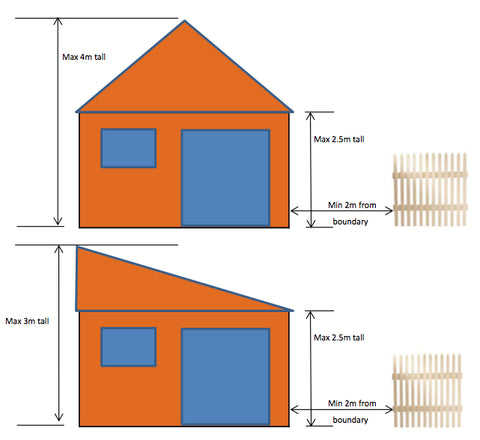
Source : Rubicon Garden Rooms
You will need planning permission if you intend to use your garden room as permanent living accommodation. This requirement applies regardless of the structure’s size or design. The key factor is how you plan to use the space – if someone will sleep there regularly or if it will function as a self-contained living unit, planning permission becomes mandatory.
While many garden rooms can be built under permitted development rights, these rights specifically exclude using the structure as separate living accommodation. The moment your garden room becomes someone’s residence, you step outside the scope of permitted development.
Common restrictions that affect garden living applications include proximity to boundaries (typically garden rooms must be at least 2 metres from property boundaries if used as accommodation), height restrictions (usually limited to 2.5m if within 2m of a boundary), and the proportion of garden space the structure occupies (no more than 50% of your original garden should be covered by outbuildings).
Circumstances Requiring Planning Permission
- Using the garden room as someone’s primary residence
- Installing bathroom facilities with drainage
- Adding kitchen facilities
- Renting the space to tenants
- Creating self-contained accommodation for family members
- Converting an existing garden room into living quarters
How Do Building Regulations Affect Garden Room Living?
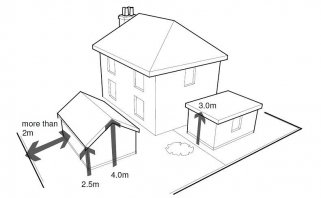
Source : Crane Garden Buildings
Building regulations ensure that any structure used for living meets minimum health and safety standards. For garden rooms intended as living spaces, compliance with building regulations is mandatory – not optional. These regulations cover numerous aspects of construction and habitability.
The insulation requirements for residential garden rooms are significantly more stringent than for non-residential garden buildings. Walls, floors, and roofs must achieve specific thermal performance standards (U-values) to ensure energy efficiency. Current requirements typically demand wall insulation with U-values of 0.28 W/m²K or better. Ventilation standards also apply, requiring background ventilation plus extract ventilation in kitchens and bathrooms to prevent condensation and maintain air quality.
Structural safety represents another critical component of building regulations. Your garden room must have adequate foundations suitable for residential use, proper structural support, and weather resistance. The structure must withstand typical British weather conditions year-round while maintaining a safe internal environment.
Essential Building Regulations for Garden Room Living
- Part A – Structural safety requirements
- Part B – Fire safety provisions including escape routes
- Part C – Protection against moisture and weather
- Part E – Sound insulation standards
- Part F – Ventilation requirements
- Part L – Energy efficiency measures
- Part P – Electrical safety standards
What Utility Connections Does a Livable Garden Room Require?
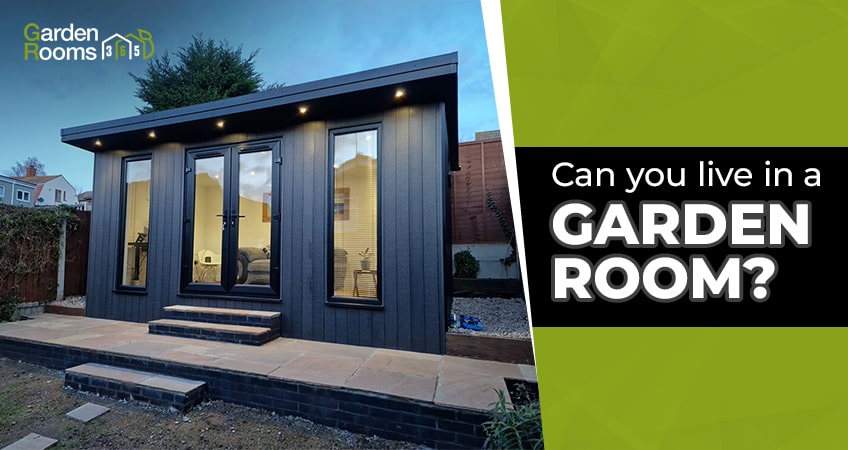
Source : garden rooms 365
For comfortable year-round living, your garden room needs proper utility connections. Electricity is essential for lighting, heating, cooking, and powering appliances. This usually requires a dedicated supply from your main house consumer unit, installed by a qualified electrician who can provide the necessary Part P certification. The wiring must be properly protected, and the installation must include appropriate circuit breakers and earthing.
Water supply is another necessity. Options include connecting to the main house supply or installing a separate connection to the mains. Either way, pipes must be properly insulated to prevent freezing in winter. For drainage, you’ll need connections for both wastewater and sewage. This might involve connecting to existing house drainage or installing a separate system like a soakaway for greywater and a septic tank or sewage treatment plant if mains drainage isn’t available.
Heating solutions for garden room living need careful consideration for the British climate. Electric options like panel heaters or infrared panels offer easy installation but can be costly to run. Air source heat pumps provide efficient heating but require professional installation. Underfloor heating works excellently with good insulation and provides comfortable, even warmth. Whatever system you choose, it must be appropriately sized for the space and installed to current regulations.
Bathroom and Kitchen Considerations
- Bathroom installations require proper ventilation and waterproofing
- Hot water can be provided via an electric shower, point-of-use water heater, or connection to the main house system
- Kitchen facilities need dedicated electrical circuits for appliances
- Consider space-saving options like combination microwave ovens or two-ring hobs
- Compact refrigeration units designed for small spaces conserve energy
- Water-efficient fixtures help reduce consumption and drainage requirements
Can You Live in a Garden Room Without Permission?
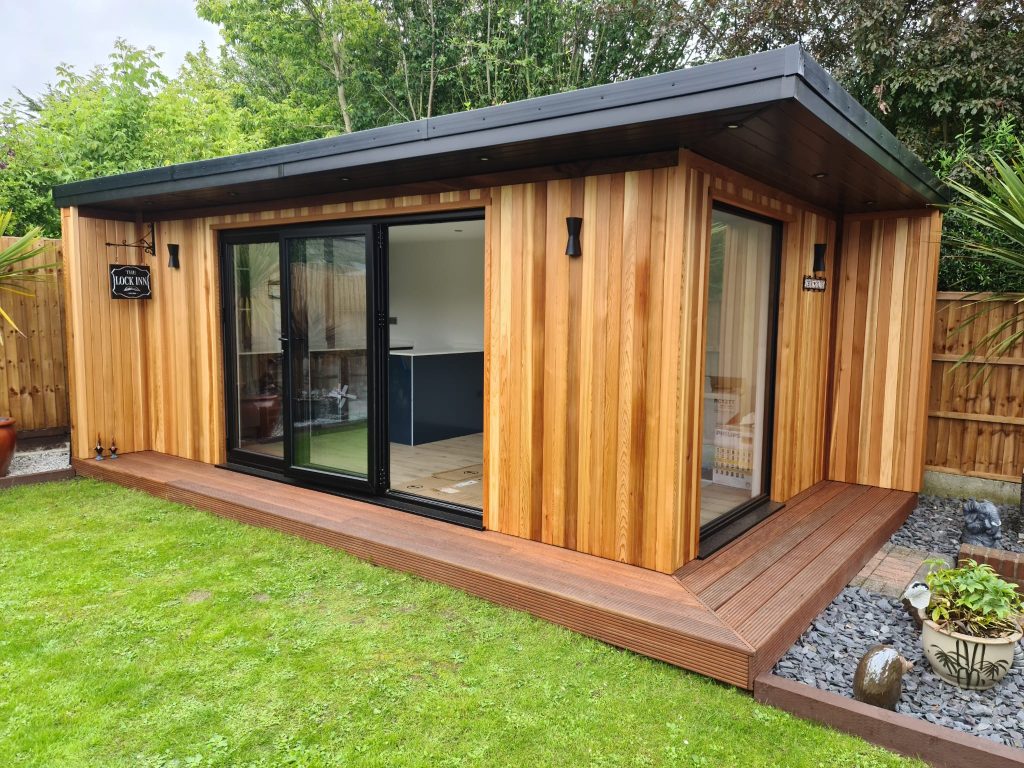
Source : garden rooms 365
Living in a garden room without the required planning permission and building regulation compliance is not lawful in the UK. While it might seem tempting to convert your garden room quietly, doing so carries significant risks. Local authorities have enforcement powers to address unauthorized developments, and these powers don’t expire in many cases of planning breaches related to creating separate living accommodation.
The distinction between occasional and permanent use matters greatly. You can lawfully use your garden room for occasional overnight stays – such as when hosting visitors or enjoying summer sleepovers – without planning permission. However, once someone begins living there regularly (sleeping there most nights, using it as their address, or treating it as their primary residence), you cross into unauthorized territory.
Enforcement actions for unpermitted garden living can be serious. Local councils can issue enforcement notices requiring you to cease residential use or even remove the structure entirely. Failing to comply with enforcement notices is a criminal offense that can result in prosecution and fines. Additionally, if you attempt to sell your property with an unauthorized dwelling, this will likely be uncovered during legal searches, potentially derailing your sale and affecting property value.
Potential Consequences of Unauthorized Garden Room Living
- Enforcement notices requiring cessation of residential use
- Orders to remove unauthorized facilities like bathrooms or kitchens
- Fines for non-compliance with enforcement actions
- Difficulties selling your property in the future
- Potential invalidation of home insurance
- Problems with mortgage lenders if discovered
How Do You Convert an Existing Garden Room for Legal Residency?
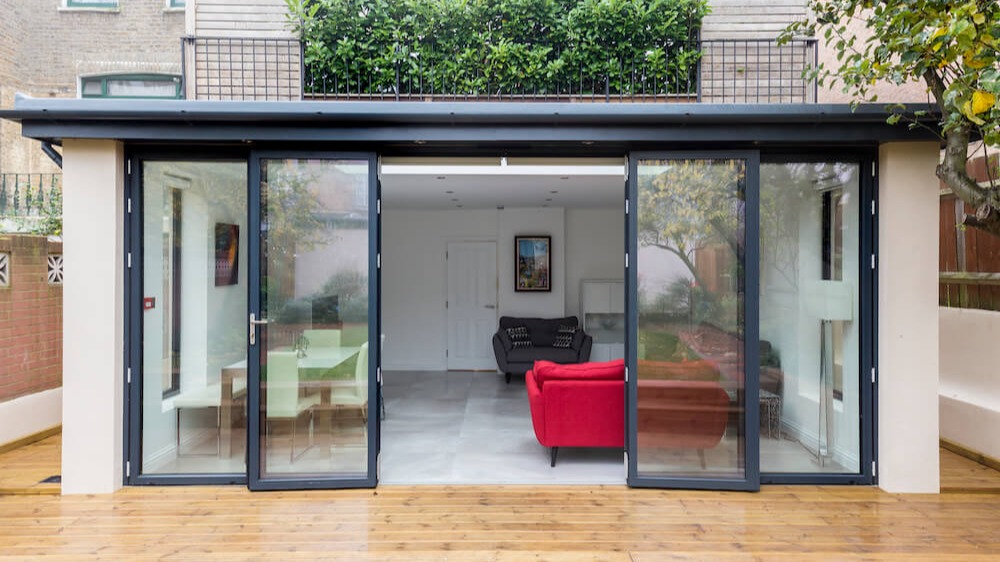
Source : Resi
If you already have a garden room and want to convert it into legal living accommodation, you’ll need to follow a structured process. First, assess whether your existing structure can feasibly meet residential standards – many garden rooms built for occasional use lack the necessary insulation, structural strength, or damp-proofing for permanent habitation. You may need significant modifications to achieve compliance.
Next, prepare and submit a planning application to your local authority. This should include detailed plans showing the existing and proposed layouts, elevations, site location, and a design and access statement explaining why the development is needed and how it fits with local planning policies. Applications typically cost between £200-400, and decisions usually take 8-12 weeks.
Simultaneously, you’ll need to address building regulations. This involves either submitting a full plans application to your local building control department or using an approved inspector. They’ll review your plans before work begins and conduct inspections during the conversion process to ensure compliance with all applicable regulations.
Professional Services Needed for Conversion
- Planning consultant to guide your application process
- Architectural designer to prepare compliant plans
- Structural engineer to assess and certify structural elements
- Building regulations inspector or approved inspector
- Qualified electrician for certified electrical installations
- Plumber for water and drainage systems
- Energy assessor to verify compliance with energy efficiency standards
What Alternatives Exist to Living in a Garden Room?
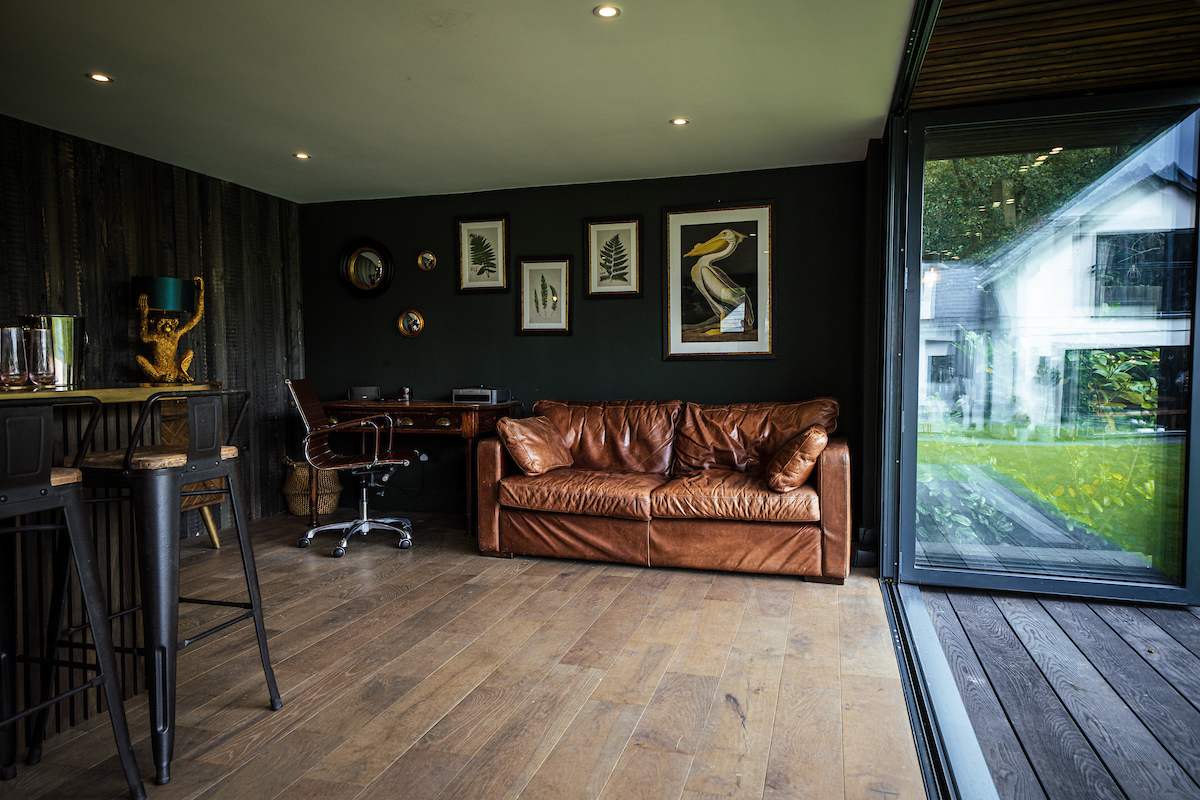
Source : Into The Garden Room
Purpose-built granny annexes offer a more straightforward alternative to converting garden rooms for residential use. These structures are specifically designed as living accommodation from the outset, with appropriate insulation, proper foundations, and compliance with residential building standards. Many local authorities look more favorably on granny annexe applications when they’re clearly intended for dependent relatives rather than creating a separate residence.
Granny annexes typically include a bedroom, bathroom, living area, and kitchenette in a fully self-contained package. Unlike converted garden rooms, they’re built with residential specifications from the ground up. The planning process can be simpler because the intended use is clear from the beginning, and many suppliers offer complete packages including planning application support.
For those seeking more flexibility, tiny homes on wheels present another option. These mobile structures technically qualify as caravans rather than permanent structures, which means different planning rules apply. While you still can’t permanently live in a caravan in your garden without permission, the temporary nature of these structures can provide more flexibility in certain circumstances.
Multi-Generational Living Alternatives
- Internal conversions of existing houses to create semi-independent living spaces
- Loft conversions with bathroom facilities for additional family accommodation
- Garage conversions that provide accessible ground-floor living for elderly relatives
- Temporary permission for mobile homes during construction of permanent solutions
- Extension of the main house with a dedicated annexe wing
- Purchasing properties with existing annexe accommodations
How to Successfully Obtain Permission for Garden Room Living
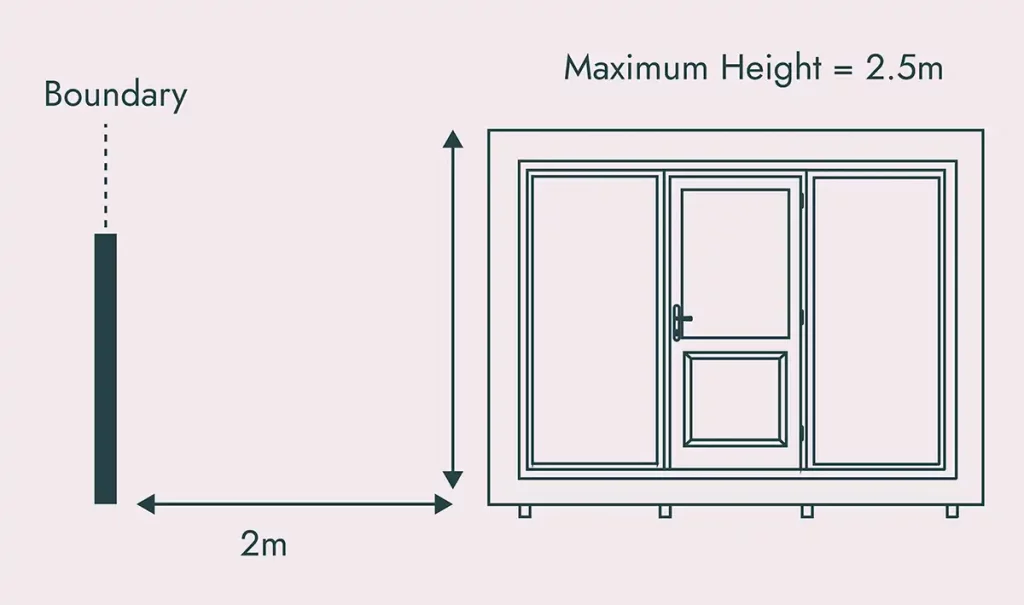
Source : Little Green Rooms
When applying for permission to use a garden room as living accommodation, preparation makes all the difference. Research your local authority’s specific policies regarding ancillary accommodation and garden developments. Many councils have dedicated policies addressing garden buildings and annexes that provide clues about what proposals they find acceptable. Use this research to align your application with local priorities.
Address potential objections before they arise. Common concerns include overlooking neighboring properties (privacy impacts), noise disturbance, parking pressures, and the creation of a separate dwelling. Design your proposal to minimize these issues by considering careful placement, appropriate screening, and linking the accommodation to the main house through shared utilities or access paths.
The most successful applications clearly establish the relationship between the garden room dwelling and the main house. Emphasize the ancillary nature of the accommodation – that it supports the functioning of the main house rather than operating independently. Applications for family members (particularly elderly relatives or those with care needs) typically receive more favorable consideration than those intended for rental or separate households.
Successful Application Strategies
- Include a strong supporting statement explaining the need (e.g., caring for elderly parents)
- Propose conditions that prevent future separation from the main property
- Submit high-quality, professional drawings that demonstrate compliance with design guidelines
- Consider a pre-application consultation with planning officers
- Engage with neighbors early to address their concerns
- Offer to accept occupancy conditions limiting who can live in the space
Final Thoughts: Making Your Garden Room Living Dream a Reality
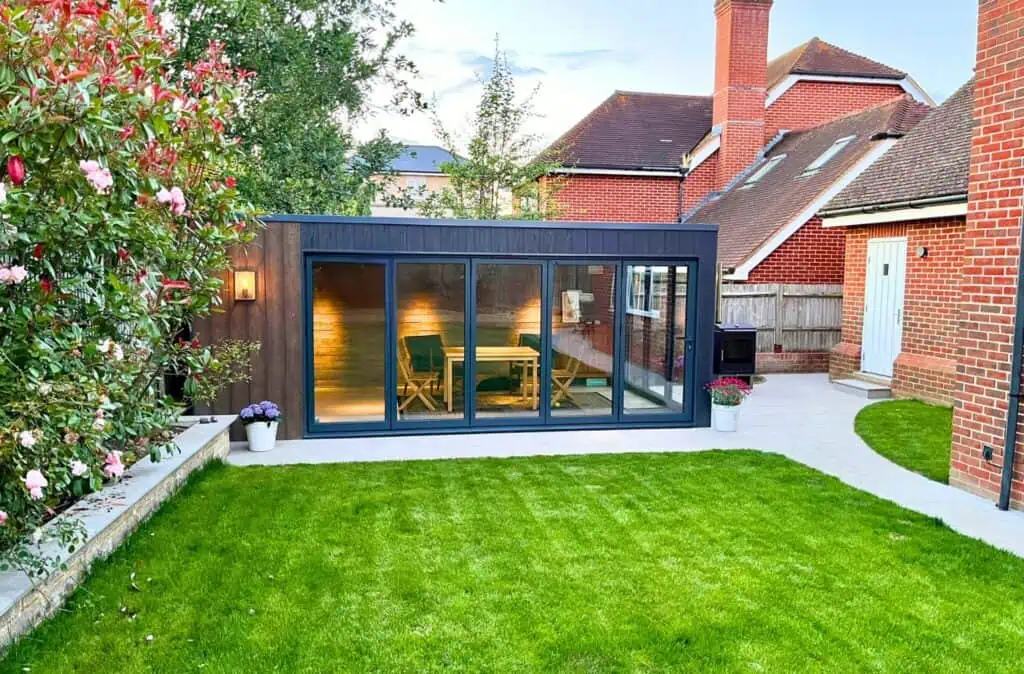
Source : InFrame Garden Rooms
Living in a garden room is legally possible in the UK, but requires navigating the appropriate permission channels. The most direct path involves securing planning permission and ensuring compliance with building regulations from the outset. Starting with clear intentions and the proper approvals helps avoid costly enforcement actions down the line.
Remember that context matters greatly in planning decisions. Garden room living arrangements that clearly serve family needs, particularly for elderly relatives or those requiring care, typically receive more favorable consideration than attempts to create entirely separate dwellings. The relationship between the garden accommodation and the main house remains a key factor in planning outcomes.
For most homeowners, seeking professional guidance represents a worthwhile investment. Planning consultants familiar with local policies can significantly improve your chances of approval. Similarly, specialist suppliers like Grannexes offer purpose-built solutions designed specifically for compliant garden living, often with planning support included.
Whether you’re looking to accommodate aging parents, create space for adult children, or establish a multi-generational living arrangement, garden room living can provide a valuable solution when approached correctly. By understanding the legal requirements and following the proper processes, you can create a comfortable, compliant living space that meets your family’s needs while satisfying regulatory requirements.
FAQ
Are garden rooms warm in winter?
Modern garden rooms are warm all year round. Fully insulated, they serve as a space to relax in the coldest of months. If you notice a chill in your garden room, there are plenty of ways to heat it. But if your garden room is not insulated or older, the hot air you’re adding can easily escape.
Is a garden room cheaper than an extension?
A garden room is more than an extension of your home, the multitude of design options and features available can make it an extension of you and your family. Usually a more affordable option, a garden room is a cost-effective alternative to traditional house extensions.
Are garden rooms soundproof?
Most garden rooms are built on a concrete foundation that keeps sound from leaking out through the floor. Many installers will use high-quality laminate flooring that also adds to the soundproofing of the floor. It’s also possible to add some vibration-absorbing matting between the laminate and the concrete foundation.
What is the lifespan of a garden room?
A standard and basic garden room typically lasts for up to 10 years. But a high quality garden room can serve your home for over 30 years and longer if it’s maintained well. To boost its longevity, your garden room should be built from strong, weatherproof and durable materials.
Can you sleep in a room full of plants?
Truth be told, many plants release carbon dioxide at night. But there’s nothing to worry about. Really really small amounts of carbon dioxide won’t be a problem for humans. A few plants will never produce enough to be harmful, maybe unless you are sleeping in some sort of a jungle… Plus, it’s all about plant selection.
Sources
[1] https://www.moderngardenrooms.com/can-you-live-in-a-garden-room/ [2] https://www.bhg.com/garden-rooms-8622054 [3] https://www.crownpavilions.com/news/can-you-sleep-in-a-garden-room/


That’s a bold prediction for the upcoming match! Seeing platforms like jililuck app casino embrace local culture is smart – quick, easy access is key for Filipino gamers, just like a streamlined betting process. Interesting times ahead!
Scratch cards are such a fun, quick thrill! It’s cool to see platforms like ph799 ph vip offering instant play & easy access for Filipino players. Simple registration sounds great – less waiting, more winning! 😉
Understanding baccarat patterns is key, but a secure platform matters too. I’ve been checking out plus777 vip app – localized payments like GCash are a huge plus for Filipino players! Solid KYC is reassuring.
Solid article! Thinking about bankroll management is key, especially in tournaments. Seems like jililive online casino offers a great mobile app for practicing on the go – perfect for honing those skills! Good read.
It’s fascinating how gaming communities are evolving in the Philippines! Platforms like ph799 are building more than just casinos – they're creating social hubs. Convenient payment options like GCash are key! Check out the ph799 app download apk for a seamless experience.
That’s a great point about game accessibility! Smooth logins & secure platforms like arionplay app download apk are key for a good experience. A legit environment builds trust, right? It’s all about enjoying the game!
Solid analysis! Seeing more platforms like PH889 prioritize both security and user experience is key for growth in the online gaming space. Checking out ph889 login club – seems legit with that focus on verification! Good read.
Okay, peeps, testing out taibayvip. They're going for that VIP feel, and honestly, the interface is nice. Games loaded fast and the customer support was pretty responsive. Might just treat myself here again.